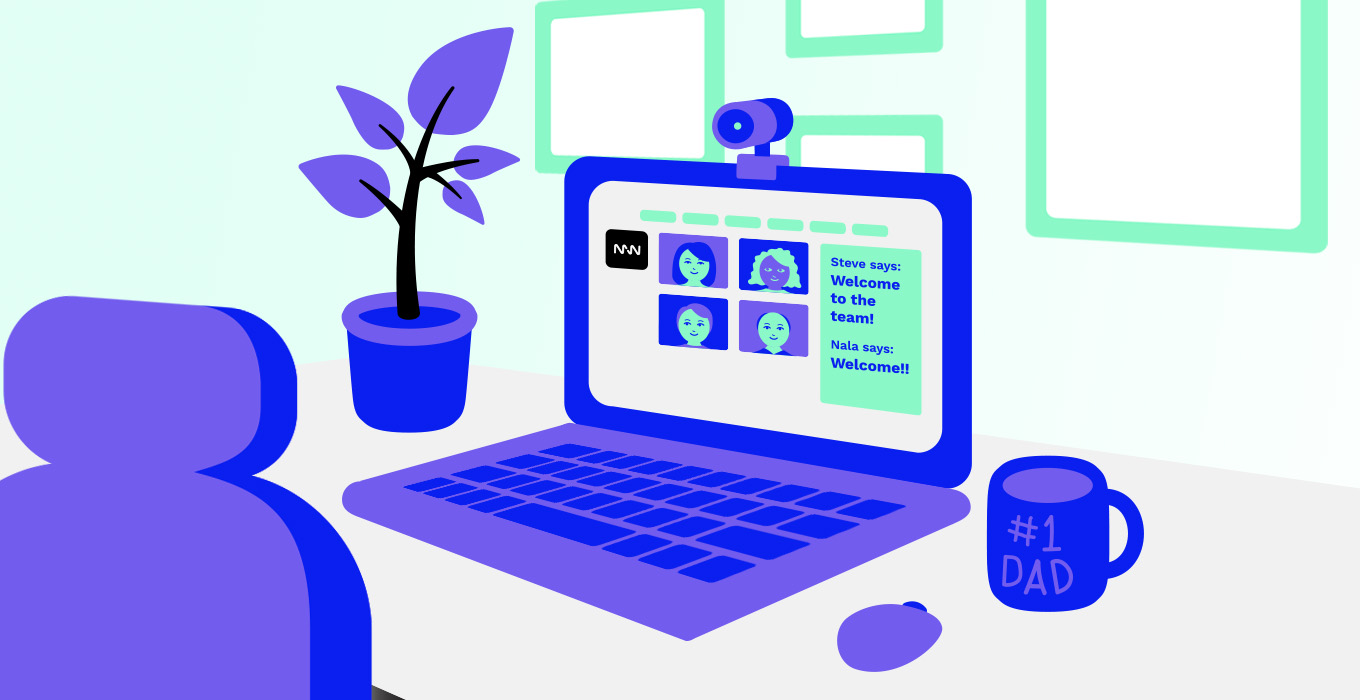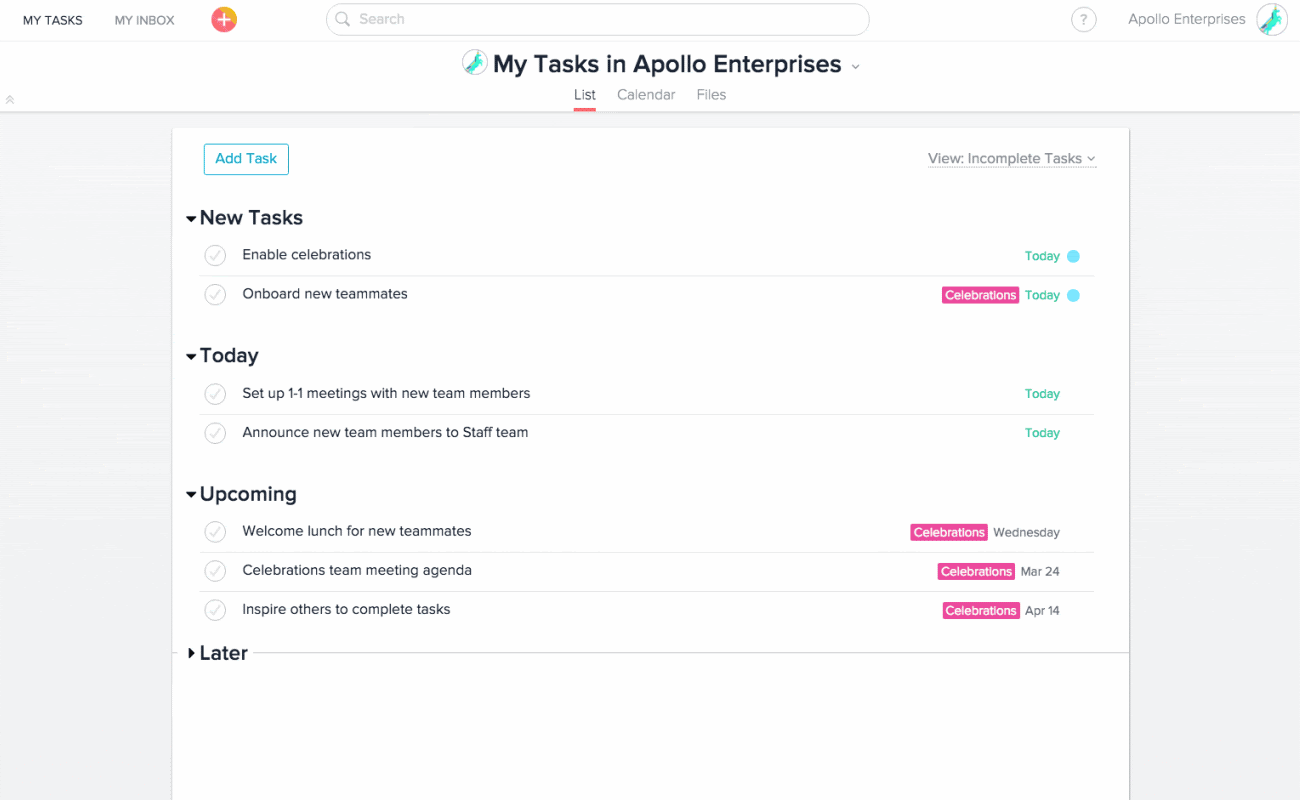
BLOG
Remote Onboarding During COVID-19
WRITTEN BY REBECCA APOSTOLI, FORMER CHIEF PEOPLE OFFICER AT MISTYWEST
How do you balance the complex social and environmental needs of a new hire during a time as uncertain and prone to alienation as COVID-19? What happens when that time you should be attempting to integrate, include and enculturate a new hire is simultaneously one where you’re being instructed (or forced) to isolate, distance and remove opportunities for connection? What a conundrum!

Whether by choice or necessity, your company has probably made the switch to remote work or “WFH”, as it’s now universally called. Along with the interesting challenges and adaptations that come along with transitioning a traditional “brick and mortar” team to a fully remote one, MistyWest has added two wonderful new hires during these uncertain times.
While segments of our team have always had strong remote work practices, many Westies in our technical team are engineers who need access to physical lab space and tools to do their jobs. Whether that’s building the actual components of our prototypes, debugging various pieces of hardware, or simply meeting face-to-face, there are definitely unique circumstances where we’ve had to navigate remote work and the individualized needs of our team carefully.
Meaningful Engagement Vs Junk Engagement.
Prior to suggesting any concrete “To do’s” or helpful tools, I think it’s valuable to distinguish the type of engagement needed to make a new hire feel welcome, included and confident that they made the right decision to join your team. When we refer to “engagement” or plan “engagement” activities, there are really two types of output: meaningful engagement and junk engagement.
Meaningful engagement may not necessarily be directly tied to the new hire’s employment, the demands of the job, the physical tools or the environment where work is performed. Meaningful engagement requires a nuanced and attentive inventory of what the new hire’s most pressing needs are. This means active listening, identifying and clarifying contextual uncertainties, and not assuming that you know what will make this new person feel the most welcomed.
Any onboarding experience can greatly benefit from making this distinction- remote or otherwise. Don’t try to make a cookie-cutter onboarding experience for every hire. Aim to reduce the amount of “junk” engagement you subject the new hire to, and maximize results by honing in on what they need most and tailoring the experience to their needs. This is the #1 job of the empathic and dialed-in onboarding manager.
Practical things you can do to maximize your remote onboarding experience!
The Right Tools
What does your team need to properly onboard this new hire remotely and communicate actionables throughout the remote period? Having the right tools to effectively communicate across a variety of platforms, depending on what information you need to send or collect, is so important. An email might not be a culturally appropriate or effective way to do a quick pulse check with a new hire- but a tool like Slack DM or SMS (if your hire opts-in to cell number sharing) might be better received.

The closest we’ll get to a team uniform.
Preparation is Everything
Once a new hire’s start date is known, begin collecting everything they will need to get started and feel welcome. If your company has any onboarding traditions, do your best to ensure continuity, even if in a reduced capacity while remote.
MistyWest has a tradition where every new hire receives an animal onesie of their choice. Instead of presenting them on Day One, we have shipped the onesie to their house so they don’t miss out on this experience. Likewise, ensure any onboarding packages like company swag, laptop, and other tools are sent out well in advance of their start date, so they have everything they need to feel prepared.

The Personal Touch
Make sure there’s someone available to greet the new hire on their first morning. Whether that’s a group Slack chat or personalized phone call from your CEO, ensure someone reaches out first thing in the morning (ideally in the new hires’ timezone – not yours). Even better is coordinating a welcoming committee, to trumpet their appearance in Slack or other group chat platform. Also, nothing tops a good old fashion welcome basket or edible arrangement. Just sayin’.
Communication Preferences
Establish communication preferences in advance and identify any internal communication biases you may have, especially across cultural barriers. For example, to a younger workforce unscheduled voice calls may be perceived as pushy or invasive. Find out the preferred means of communication prior to Day One, and aim to adhere to those. Communicate these preferences to the team so everyone knows how to reach out to the new hire in a way that won’t alienate or exclude them.
Check In Regularly
New hires should have regular contact with their onboarding manager or a member of their team daily to start. Discussion of work or tasks to be completed can be a part of this check-in process, or it can be purely social. It’s important that your team feels valued and seen as humans first, and employees second. I like to see how our newly located hires are adjusting to life in Vancouver, and suggest good food or nice walks close to their homes (while obviously recommending they adhere to social distancing practices!).
Some great tools MistyWest uses regularly to manage our remote onboarding experience.
Asana
If you’ve read our Adaptive Organizations blog series, you’ll already know that MistyWest uses Asana broadly as a team to manage our projects and workflows across many departments. When it comes to onboarding, each new hire is assigned an employee-facing project, which walks them through every part of their onboarding process, task-by-task. Each task is assigned and the new hire “completes” the task once they’ve read the information or done the requested action. An added bonus: the amazing animations once they’ve completed a bucket of tasks!

Conquer a bunch of Asana tasks and you’ll be rewarded with unicorns.
On the company-facing side, a member of our HR team is assigned the administrative tasks such as adding them to tools, setting up credentials and getting them onboarded into our HRIS and payroll systems. This ensures very few dropped balls or major #HRfails on Day One.
Collage
You might have a specific HRIS (Human Resource Information System) you prefer, or you may still manage your information in Excel spreadsheets (hey, no judgement!). We love Collage because it:
- Is Canadian-based, meaning their servers are located in Canada and subject to Canada’s stringent privacy laws; and
- It greatly reduces the number of steps to gathering and storing information on our team, a well as moving new hires from our ATS (Applicant Tracking System) to our onboarding workflow.
- Integrates with our health insurance provider and automatically enrolls new hires in our benefits plan.
Slack
Slack is our team’s preferred group and 1-to-1 direct communication tool. It allows for the creation of thematic channels which anyone can join, as well as more targeted groups, like administrative departments or technical project teams. With added functionality for voice and video calls, it’s definitely the superior internal communications tool, IMHO.

Plus, they have integrations for a ton of handy tools like the Donut, which randomly pairs members of your team and prompts them to grab a coffee or Donut. We’ve continued using this function, but virtually of course.
Hangouts
For full team meetings and external facing calls, such as video interviews and check-ins, we use Google Hangouts. This has been our go-to tool for video conferencing to date and we continue to use it during remote work periods.
—
We hope you’ve enjoyed reading our remote onboarding article and come away with some ideas for how you can improve the first day experience for your new hires!
Distantly Yours,
MistyWest People Team
Recruitment Practices
MistyWest is an equal opportunity employer that values diversity at our company. We do not discriminate on the basis of race, religion, colour, national origin, gender, sexual orientation, age, marital status, veteran status, or disability status. We are actively working to reduce and eliminate barriers to entry for traditionally marginalized groups and individuals.
Have questions about our hiring practices? Ask us!